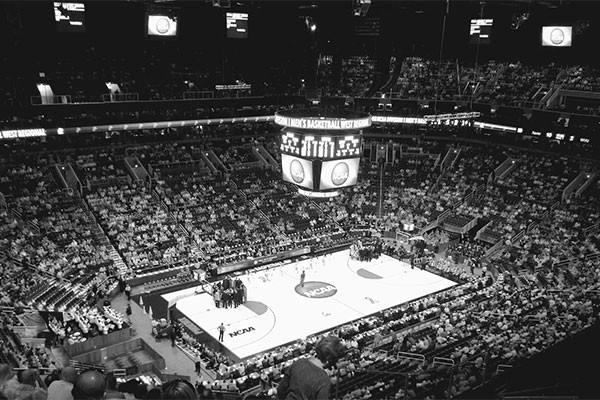I've heard a few people asking the same question in the last couple of weeks: “What the hell is March Madness?” In simple terms it’s a college basketball tournament in the United States played by the top 68 teams in the nation. Yet look deeper and it’s so much more than just a tournament. It finances organisations, makes or breaks careers, brings joy to some and heartbreak to others, and is quite honestly just as ‘mad’ as its name wants you to believe.
This was the first year that I’d ever paid attention to March Madness. I had known what it was but had never really had any motivation to sit down and watch it. This year I decided that I’d give it a go and all I can say is - wow. Upsets are so common that one would question the definition of the word, and thus it has become a phenomenon for fans to try and correctly guess the winners of all the games and the teams that will end up in the “Final Four”. Forget the TAB competition during the Rugby World Cup, this is a whole different can of beans (although Japan was a fly in the punchbowl for most). Let’s be honest, we all knew pretty much who was coming out of the groups at last year’s World Cup except for the group of death containing Australia, England, and Wales. But in March Madness, teams the equivalent of Uruguay and Romania can beat those similar to the All Blacks. This year’s biggest shock came in the first round when No.15 ranked Mid Tennessee defeated No.2 ranked Michigan State, a team that many people had as a prime favourite to bring home the title. In fact, out of the 13.02 million that participated in ESPN’s Tournament Challenge, 22.3 percent, or 2.9 million people believed that Michigan State would indeed win the championship. They were the second favourites behind Kansas (25 percent) yet crashed out moments after the starting gun fired. In March Madness, the unexpected is to be expected, even if it doesn’t seem plausible before tip-off.
Turning to finances, I always find it funny looking at how much money America’s “amateur” college sports rake in. For years there has been issues over the fact that none of the players receive any money for their play, yet plenty of others do. For example, the NCAA (National Collegiate Athletics Association) receives a whopping $900 million for every March Madness, it’s most profitable business. Most of this comes from broadcasting rights, part of a 14-year $10.8 billion deal with CBS and Time Warner. The tournament also generates huge ad revenue, and in 2014 was second to only the NFL in postseason ad revenue. But it’s not just the broadcasters and NCAA that get the cash. Teams can net around $1.7 million just for appearing in the tournament, while making it to the Final Four can see a team receive $8.5 million. It would then be surprising to find out that only three percent of teams generate profit. This can be attributed to the amount of money some schools pour into their basketball programs in order to have success. The salaries of coaches and scouts consumes most of their surplus funds, a sacrifice made in order to be elite.
I earlier mentioned how the tournament brings joy to some and heartbreak to others. Well how about both. Gather round kids I have a story to share. It is one of Northern Iowa, a No.11 ranked side looking to prove themselves on the biggest stage. In their opening game versus No.6 Texas, not many gave them a chance and with the game coming down to the wire, it looked like their dream was about to end prematurely. Alas this was not so as Paul Jesperson hit a half-court game-winner that sent his Northern Iowa side into the next round. They were determined to make the most of this opportunity and as they began playing No.3 Texas A&M, it seemed that they were going to complete their second upset in the week. But then….drama. With a twelve point lead and only forty-four seconds remaining, Northern Iowa had the biggest collapse in NCAA Tournament history, allowing Texas A&M to tie the game up with a second remaining. Exhausted, Northern Iowa could not keep up with their opponents in overtime and eventually lost. In a game where they were going to get an upset victory, the tides turned and their opponents grabbed the upset. It was upset-ception. This story encapsulates March Madness and is the reason why it is so popular. It may not affect our lives in the slightest but boy is it entertaining. I urge those even slightly interested in basketball to tune in to the Championship Game later this week and possibly witness something special.



